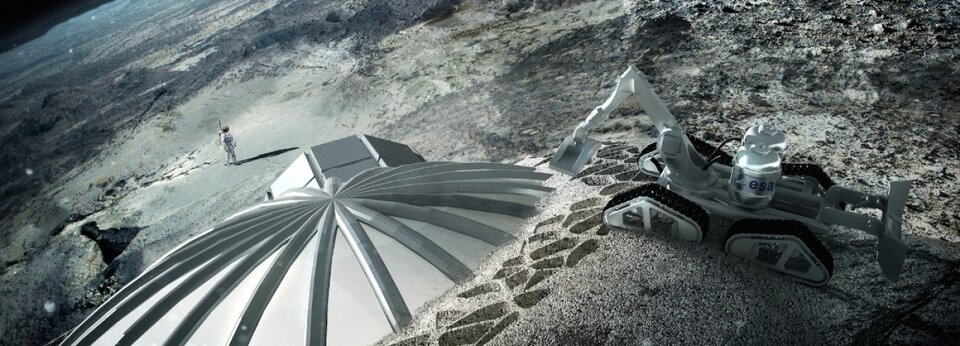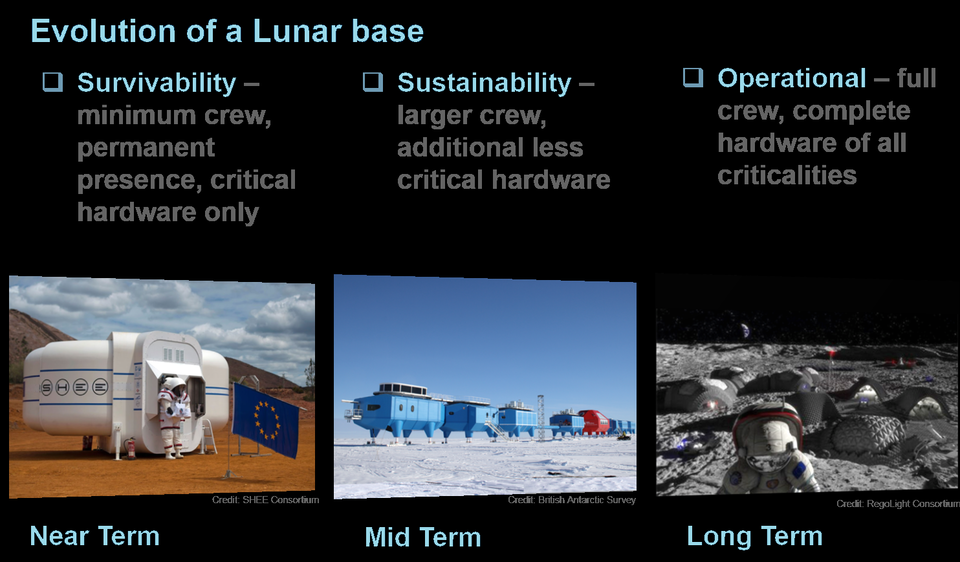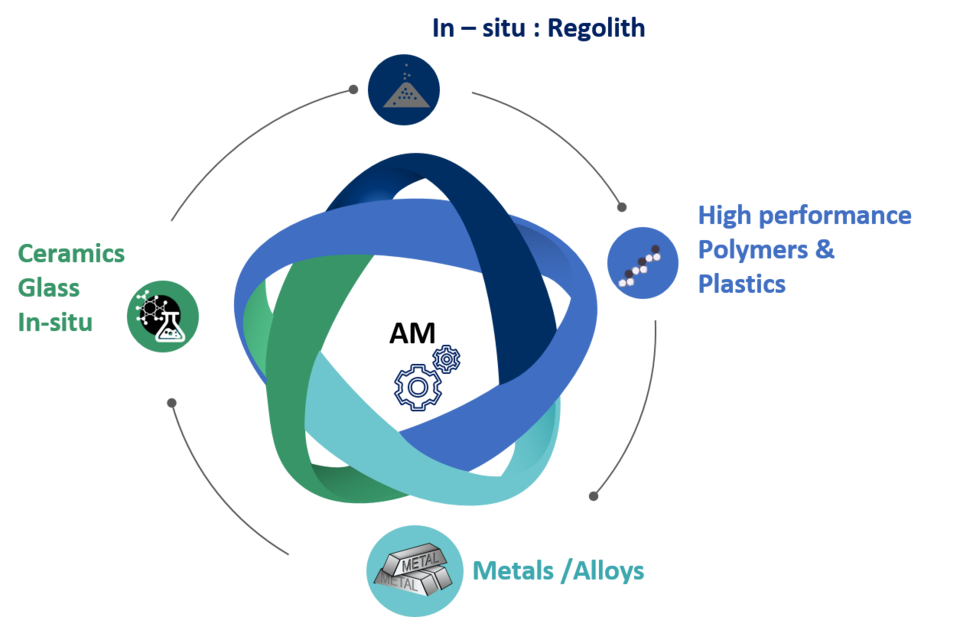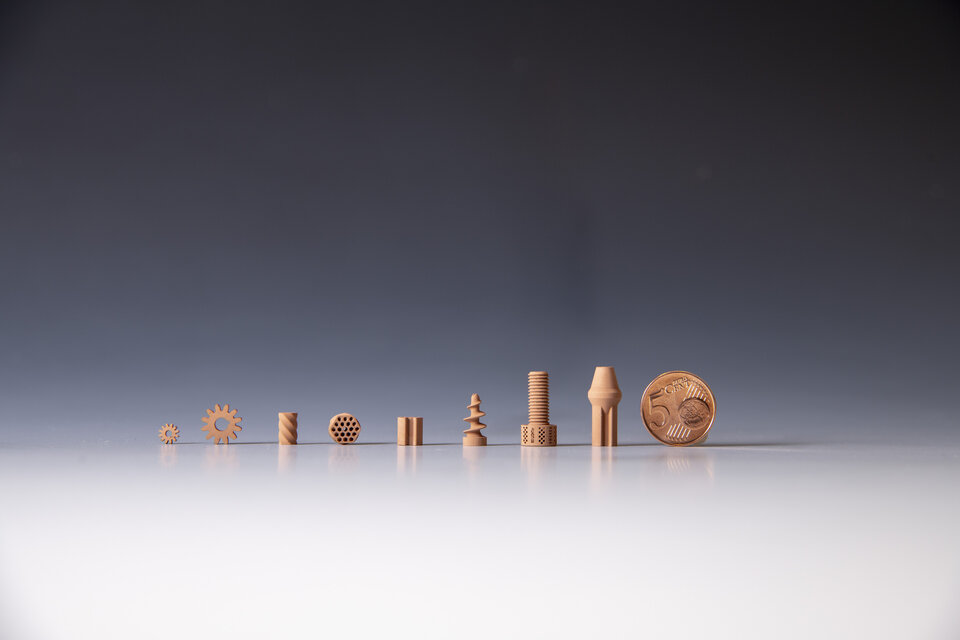3D printing our way to the Moon
To bring or to print? That is the question. Visiting the Moon’s surface is the next logical step in human exploration of the Solar System, and building a Moon base is part of this vision. But getting supplies there won’t be straightforward. A study supported by ESA Discovery & Preparation recently investigated how 3D printing could ease the construction, expansion and maintenance of a lunar base.
Not only would living on the Moon teach us much more about the lunar environment, it would also help us assess the health impacts of living in space and carry out experiments in a special set of conditions. It would pave the way for concepts like space tourism, lunar mining, and spacecraft refuelling stations, and would be a stepping stone to an interplanetary existence. But a trip to the Moon doesn’t come cheap; it is simply not feasible to send up a rocket every time you need something new.

One of the keys to any sustainable long-term presence in space will be the capability to be, as far as possible, Earth-independent. Any necessary structures, equipment and spare parts will eventually need to be made in-situ and on-demand. Currently the most feasible way of doing this would be to use a 3D printer, potentially with lunar regolith as the input material. But not every structure can be 3D printed. And not every 3D printing process is suitable for every purpose.
Whilst previous investigations into 3D printing of materials and objects for a lunar base were dedicated to specific elements, for example habitat structure, this new study considered all aspects of the construction and operation of a lunar base. It explored exactly how 3D printing could realistically be used to accomplish the dream of living on the Moon.

“3D printing has the potential to be very sustainable, generating less waste, providing the capability to optimise geometries, and resulting in strong but lightweight structures and tools,” explains Advanced Manufacturing Engineer Advenit Makaya, responsible for the project at ESA. “The URBAN study looked into just this, investigating the materials needed at each stage of a sustainable Moon base – building it, running it, maintaining it and carrying out research with it.”
But 3D printing on the Moon is somewhat more complicated than it is on Earth. The lack of atmosphere, presence of lunar dust, moonquakes, micrometeorites, extreme temperatures, and – most importantly – reduced gravity, all pose problems for 3D printing.
URBAN – led by Germany’s OHB systems with input from Sonaca Space, Liquifier System Group and COMEX – studied all available printing materials and techniques to create a searchable database to find the most efficient way of producing specific items and materials using the available resources on the Moon.

“We identified four particularly promising 3D printing processes to manufacture the items necessary for establishing a sustainable and permanent lunar base,” explains Antonella Sgambati, leading the project from OHB. “We started by carrying out a survey to find out what items would be most beneficial, before looking into whether currently existing 3D printing techniques could be used to make each item, and if so, what the most effective technique would be.”
One aim of this study is to help decision makers with one of the biggest questions in the Moon exploration debate – bring or print? This question will become even more prominent with the increasingly-realistic prospect of a permanent lunar base.
The 3D printing techniques selected to be the most interesting for lunar exploration – due to their versatility, space-readiness and ability to process a range of materials – are:
- Solar sintering which concentrates sunlight to shape lunar soil into a variety of objects – mostly for infrastructure – such as habitat, landing pads and dust protection walls;
- Electron Beam Additive Manufacturing which uses a vacuum to create an electron beam that can be used to produce large metal parts;
- Fused filament fabrication which has the possibility to create a wide range of materials and has already been tested in low gravity conditions;
- Lithography-based ceramic manufacturing which can use lunar soil to create ceramic items with very precise dimensions.

This study led to a competition that invited you to tell us what you would 3D print to turn a lunar base into a place that feels like home. Over a hundred fantastic ideas were submitted, many of which focused on bringing nature, hobbies and family memories in to a Moon base.
The winner of the under 18 category, Judith de Santiago, proposed a twelve-sided plant pot that incorporates symbols of Earth. The winner of the adult category, Helen Schell, proposed a ‘magic Moon garden’ full of aromatic, colourful plants that would be printed from recycled plastic. The garden would even convert carbon dioxide into oxygen, just as a real plant does.
“The competition brought in a human factor, helping us see exactly what lunar settlers would need to connect them back to Earth,” concludes Advenit. “This information will feed into future studies, which we hope will build upon the URBAN findings.”




